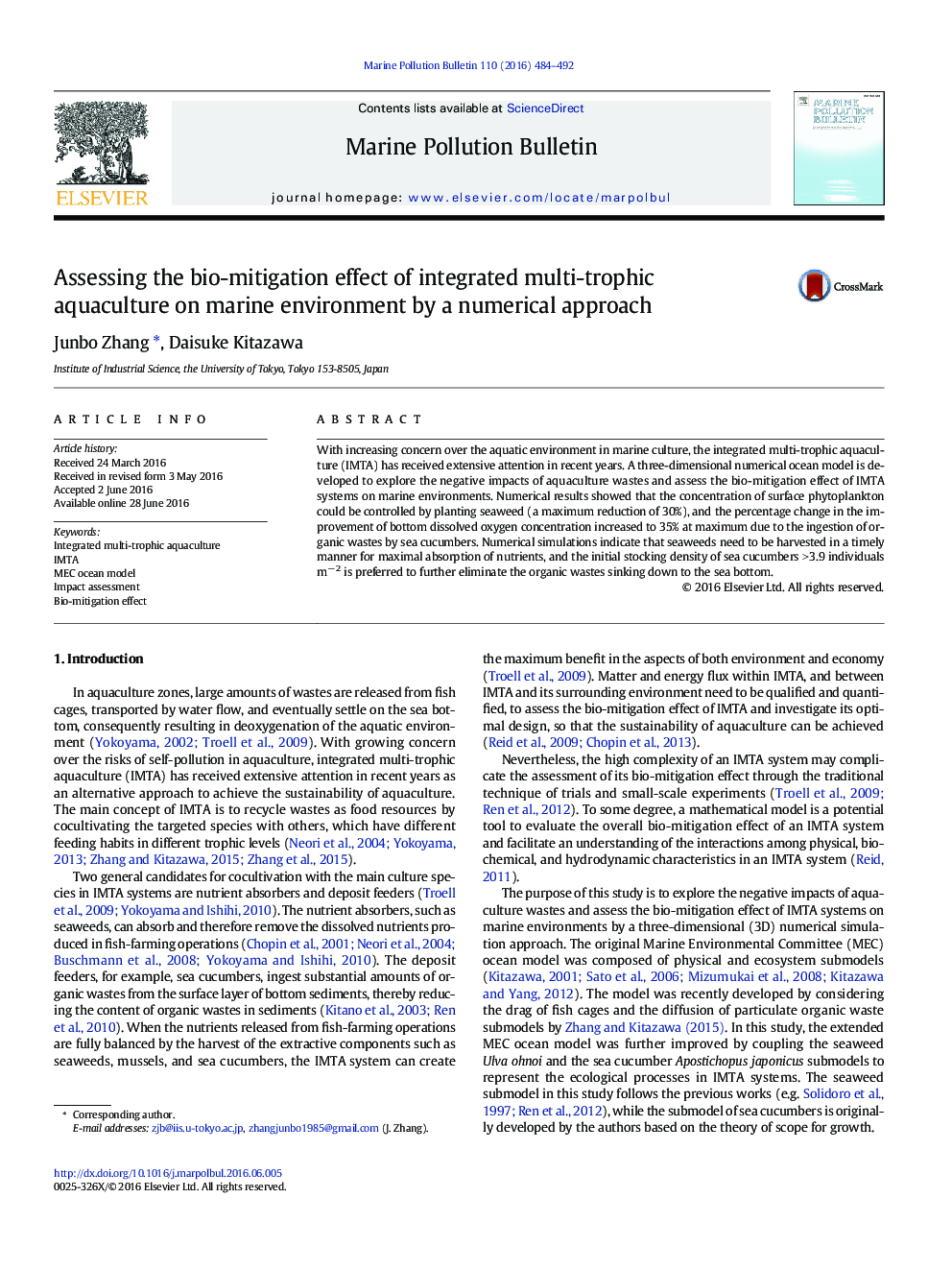| کد مقاله | کد نشریه | سال انتشار | مقاله انگلیسی | نسخه تمام متن |
|---|---|---|---|---|
| 6355732 | 1315593 | 2016 | 9 صفحه PDF | دانلود رایگان |
- A three-dimensional (3D) ocean model coupled with ecosystem and individual-based submodels was developed.
- The bio-mitigation effect of integrated multi-trophic aquaculture (IMTA) was assessed.
- We modeled interactions among physical, biochemical, and ecological environments in IMTA.
- Phytoplankton reduced by seaweed and bottom dissolved oxygen (DO) improved after releasing sea cucumbers.
With increasing concern over the aquatic environment in marine culture, the integrated multi-trophic aquaculture (IMTA) has received extensive attention in recent years. A three-dimensional numerical ocean model is developed to explore the negative impacts of aquaculture wastes and assess the bio-mitigation effect of IMTA systems on marine environments. Numerical results showed that the concentration of surface phytoplankton could be controlled by planting seaweed (a maximum reduction of 30%), and the percentage change in the improvement of bottom dissolved oxygen concentration increased to 35% at maximum due to the ingestion of organic wastes by sea cucumbers. Numerical simulations indicate that seaweeds need to be harvested in a timely manner for maximal absorption of nutrients, and the initial stocking density of sea cucumbers > 3.9 individuals mâ 2 is preferred to further eliminate the organic wastes sinking down to the sea bottom.
Journal: Marine Pollution Bulletin - Volume 110, Issue 1, 15 September 2016, Pages 484-492
